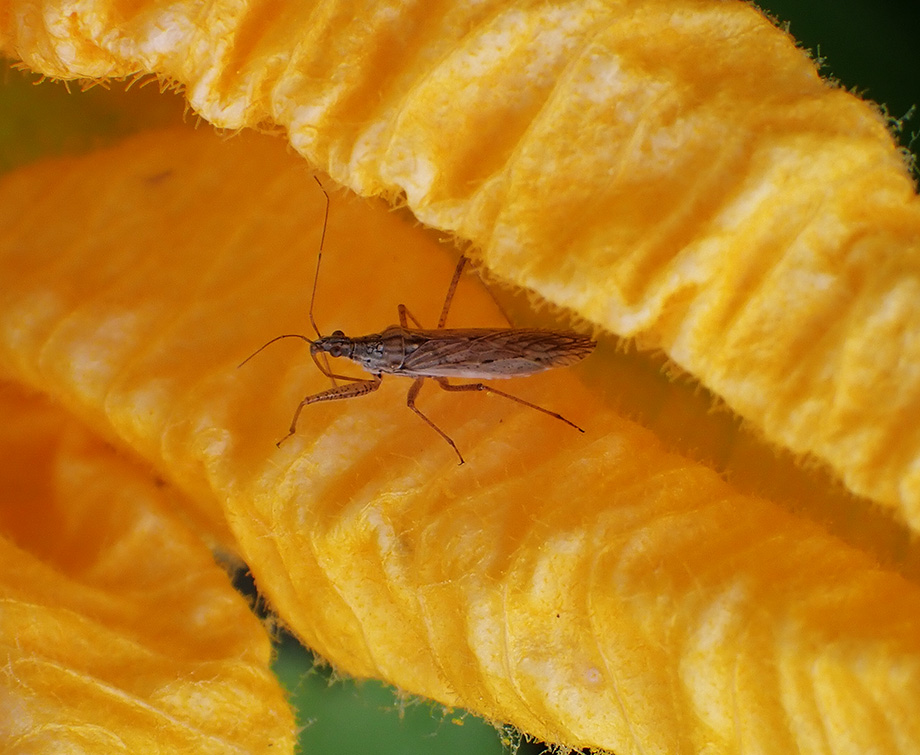Column: Organic Insect Control


For this week’s garden column, I wrote about organic insect control. I know I’ve discussed this off and on in my columns and videos. But you have to admit this is such an important topic!
The takeaway is that we all rely on insects for more than many folks realize. My goal is to explain why the use of pesticides is such a bad idea while offering viable alternatives. I hope you’ll agree that this is something we all need to consider and take action on.
Use organic methods for insect control
by Susan Mulvihill
Do insects give you the heebie-jeebies? While some species can cause problems for our vegetable and ornamental plants, the vast majority have either beneficial or benign roles in the environment.
Beneficial insects include pollinators and predatory species such as ladybugs, lacewings, ground beetles and garden spiders. An example of a benign insect is one that aids in the decomposition of organic matter. Like it or not, the human race is absolutely dependent upon all of these insects.
There is an alarming statistic that makes me cringe every time I hear it:
“Homeowners use up to 10 times more chemical pesticides per acre on their lawns than farmers use on crops. They spend more per acre, on average, to maintain their lawns than farmers spend per agricultural acre.”
U.S. Fish and Wildlife Service
My organic methods
I grow all of my plants without using pesticides or herbicides. The result is that I get great harvests from our vegetable garden. I’m also treated to lovely blooms from annual and perennial flowers, bulbs and shrubs all season long. I am not worried in the least about a few holes or insects, especially on my ornamental plants.
The flowers attract pollinators and beneficial insects. They, in turn, make those veggie harvests possible as well as prey upon damaging insects. Every gardener’s goal should be to create a balance in the ecosystem that they oversee and care for. In order to have the good bugs, you must have some of the bad bugs for them to feast upon.
What can we gardeners do to help out the planet? For starters, properly dispose of pesticides and herbicides, and look for alternative ways to address problems that arise. There are many organic products that help with insect control. But there are caveats that go along with their use as well.
Insect ID is key!
Start by properly identifying the insect in question. Your local Master Gardener program can help with this and it’s a free service. Learn about the insect’s life cycle, which plants they cause problems for and who their natural predators are.
If you are considering an organic product, always read the label carefully. Certain products such as Neem oil, insecticidal soap and pyrethrins are toxic to pollinators. This means they should be applied when pollinators aren’t active – very early or late in the day – and away from flowering plants. Since these products are also toxic to aquatic life, don’t use them around water sources or pour them down the drain.
The three damaging insects that I want to keep away from my plants are aphids, cabbage worms and leafminers. Aphids and cabbage worms are particularly drawn to cabbage family crops such as broccoli, cabbage and kale. Leafminers damage beets, spinach and Swiss chard.
Fortunately, none of these crops needs to be pollinated. After planting them, I immediately place a cover over the bed for the entire growing season. Floating row cover or agricultural insect netting work best. The physical barrier keeps those insects from causing any damage. It’s such a simple solution because I don’t need to use any products to control them. Other solutions include hand-picking or knocking the insects into a container of soapy water.
As fall approaches, help your beneficial insect population by refraining from tidying up everything. Keep fallen leaves under your shrubs and trees to provide shelter for them during the winter months. When spring arrives, they’ll emerge and go to work for you.
Susan Mulvihill is author of “The Vegetable Garden Problem Solver Handbook” and “The Vegetable Garden Pest Handbook.” She can be reached at Susan@SusansintheGarden.com. Watch Susan’s videos at youtube.com/susansinthegarden.
